Bluestone walkways offer a timeless and elegant solution for creating stunning garden paths. Known for its durability and rich, natural color variations ranging from blue-gray to earthy browns, this versatile stone complements nearly any landscape style. Whether you envision a rustic, meandering path or a formal, structured walkway, bluestone provides a premium foundation that enhances the beauty of your outdoor space. These ideas explore the diverse ways you can use bluestone to craft a garden path that is not only functional but also a captivating feature, guiding visitors through your landscape with undeniable charm and sophistication.
1. Irregular Bluestone Stepping Stones Walkway
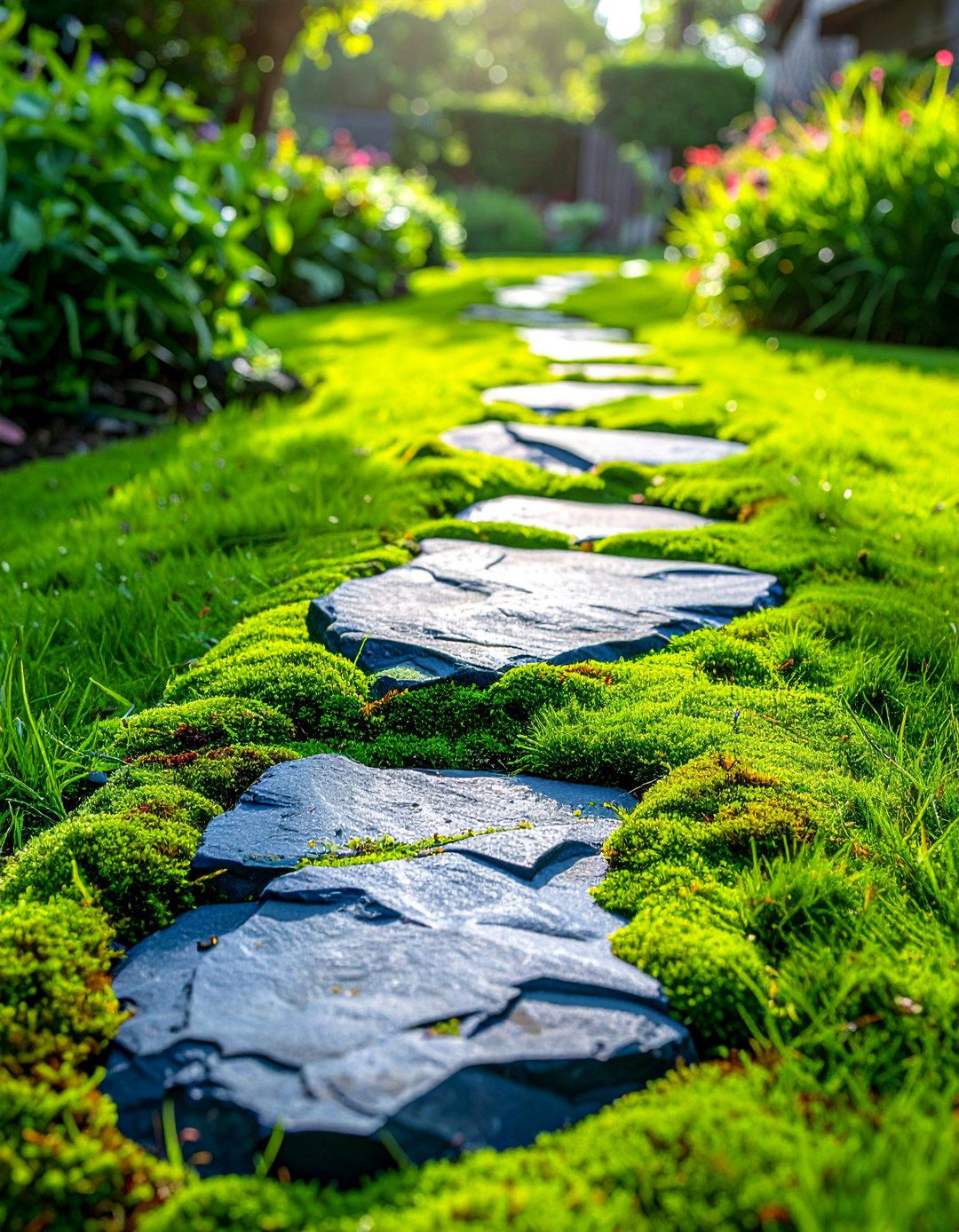
For a wonderfully natural and organic feel, an irregular bluestone stepping stones walkway is an excellent choice. This design uses large, randomly shaped flagstones set directly into a lawn or a bed of low-growing groundcover. The generous spacing between each stone encourages a more leisurely pace, inviting you to slow down and appreciate the surrounding garden. The beauty of this style lies in its imperfection; each stone’s unique shape and placement create a rustic, one-of-a-kind path that appears as if it has always been part of the landscape. It’s a perfect fit for cottage gardens, woodland settings, or any space where a less formal look is desired.
2. Formal Rectangular Bluestone Walkway
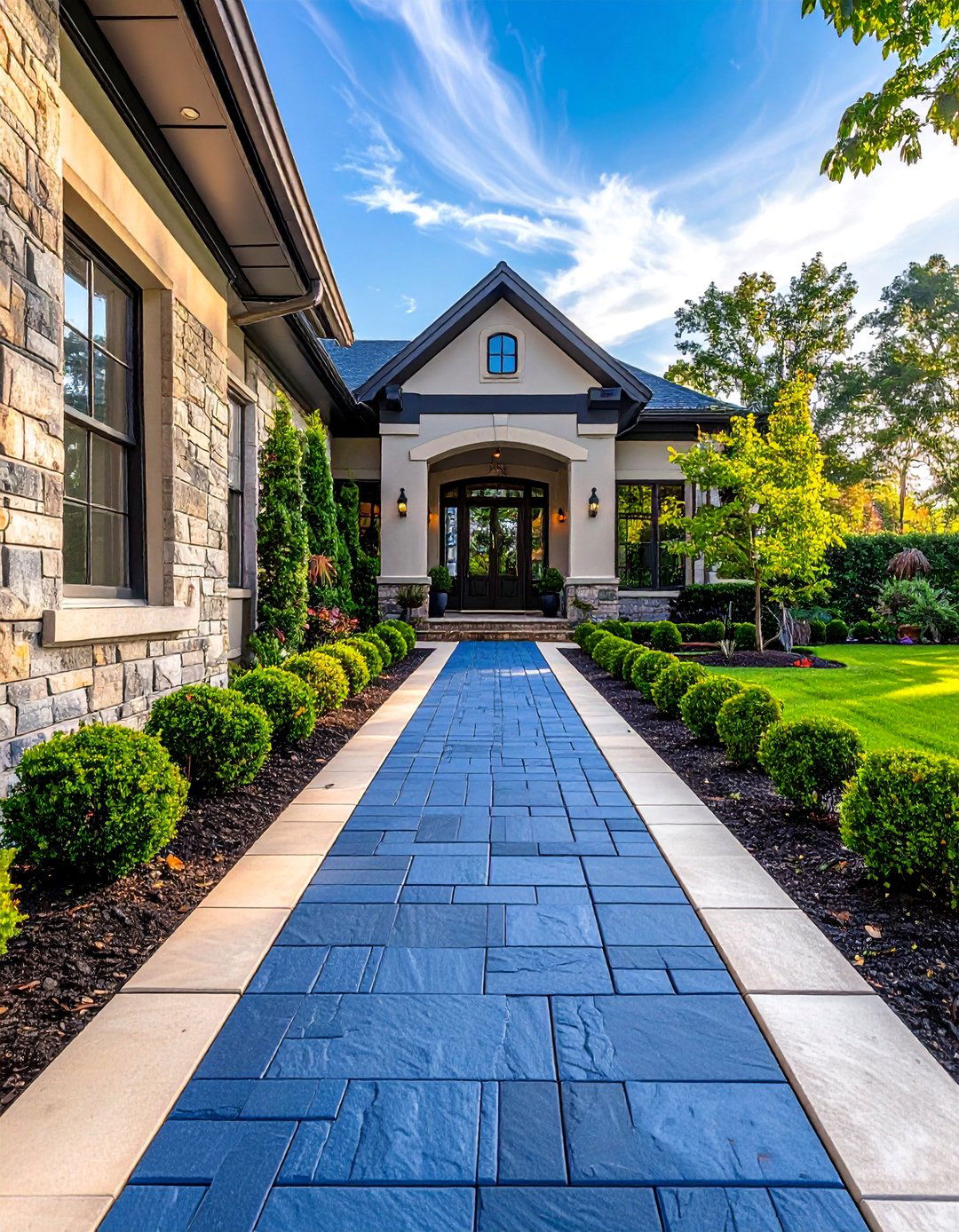
A formal rectangular bluestone walkway provides a sense of order, elegance, and classic design. This approach utilizes uniformly cut rectangular or square pavers, often with a thermal finish for a smooth, non-slip surface. The stones are typically laid in a precise pattern, such as a running bond or a simple stack bond, with tight, clean joints filled with polymeric sand. This creates a clean and sophisticated path that works beautifully for front entryways, formal gardens, or paths leading to a patio. The straight lines and consistent geometry offer a sharp contrast to the soft, organic shapes of plants, resulting in a balanced and visually striking landscape feature.
3. Curved Bluestone Walkway
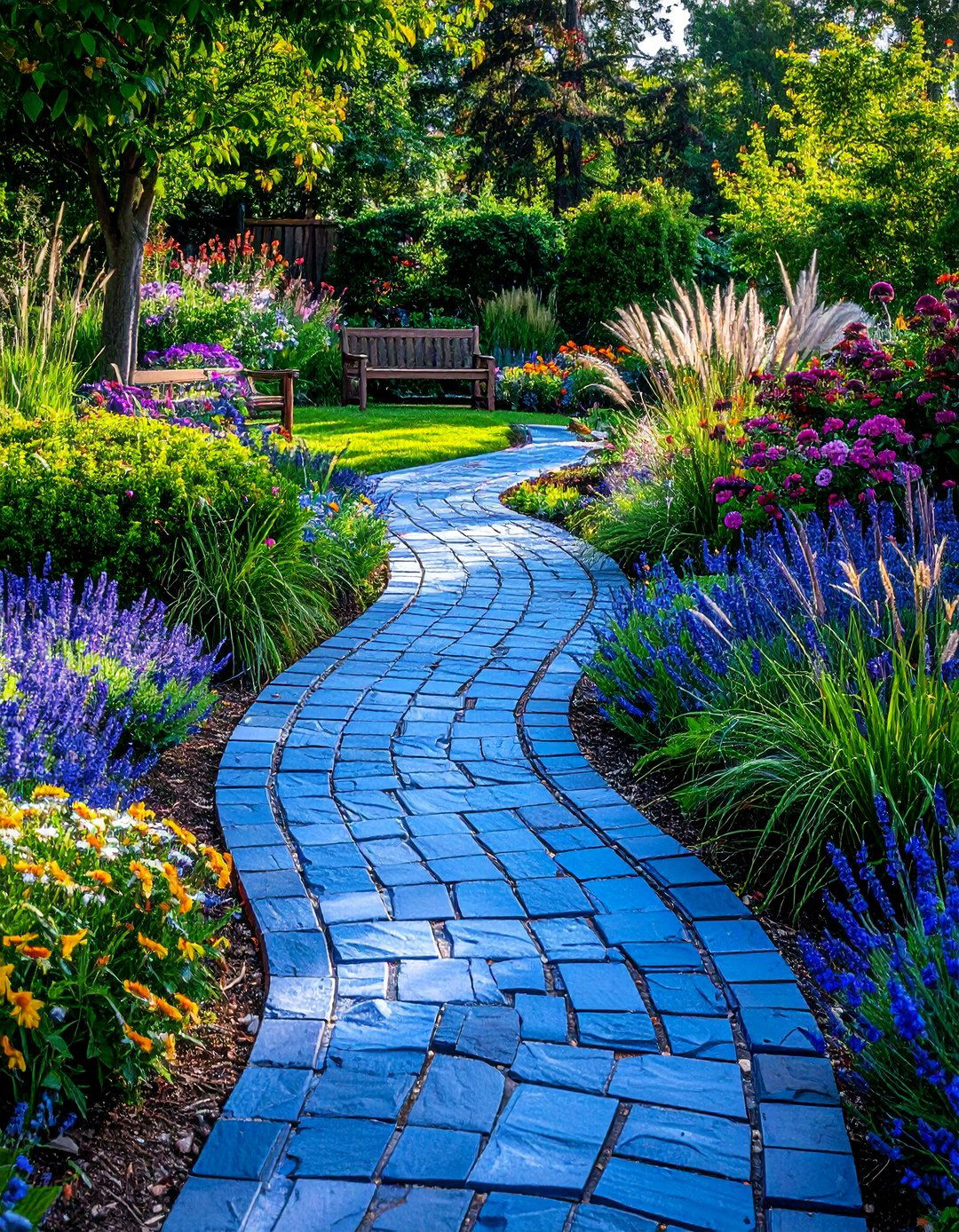
Introducing a curved bluestone walkway can completely transform the feel of a garden, adding a sense of flow and mystery. Unlike a straight path that reveals its destination immediately, a gentle curve guides the eye and encourages exploration, making the garden feel larger and more intriguing. This design is achieved by carefully cutting and fitting bluestone pavers to follow a meandering line. The smooth, flowing arc of the walkway softens hardscapes and complements the natural shapes of garden beds and trees. This style is incredibly versatile, fitting equally well in both formal and informal landscapes, leading guests on a graceful journey through your outdoor sanctuary.
4. Bluestone Walkway with Grass Joints
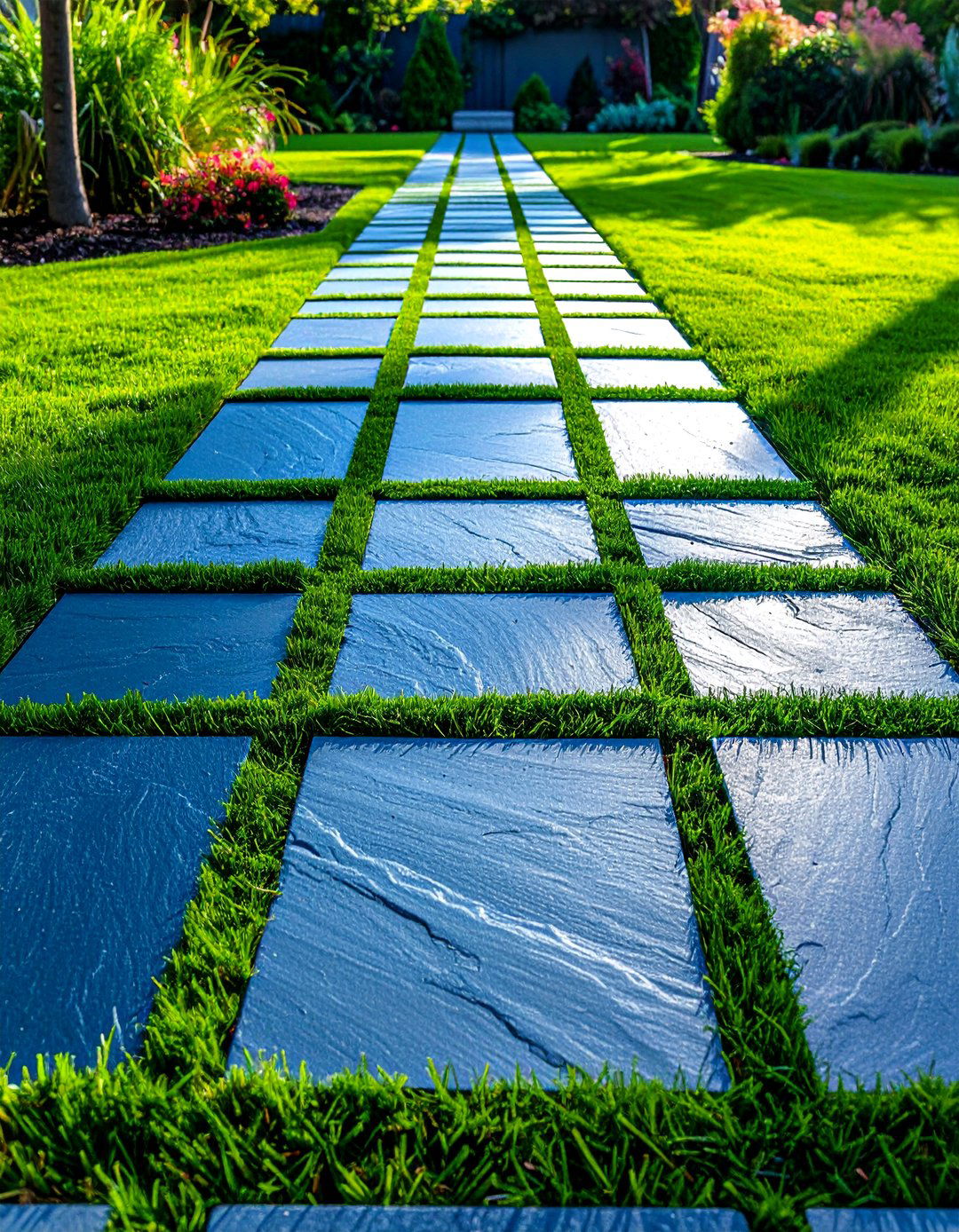
A bluestone walkway with grass joints offers a beautiful fusion of hardscape and softscape, creating a living path that feels integrated with the lawn. This design involves setting precisely cut bluestone pavers with wide, uniform gaps between them, which are then filled with soil and seeded with durable turf. The result is a stunning visual pattern of cool stone interspersed with vibrant green lines. This approach softens the overall look of the walkway, promotes drainage, and feels wonderful underfoot. It’s an ideal choice for connecting a patio to the lawn or for creating a main garden path that feels lush and natural.
5. Bluestone and Pea Gravel Walkway
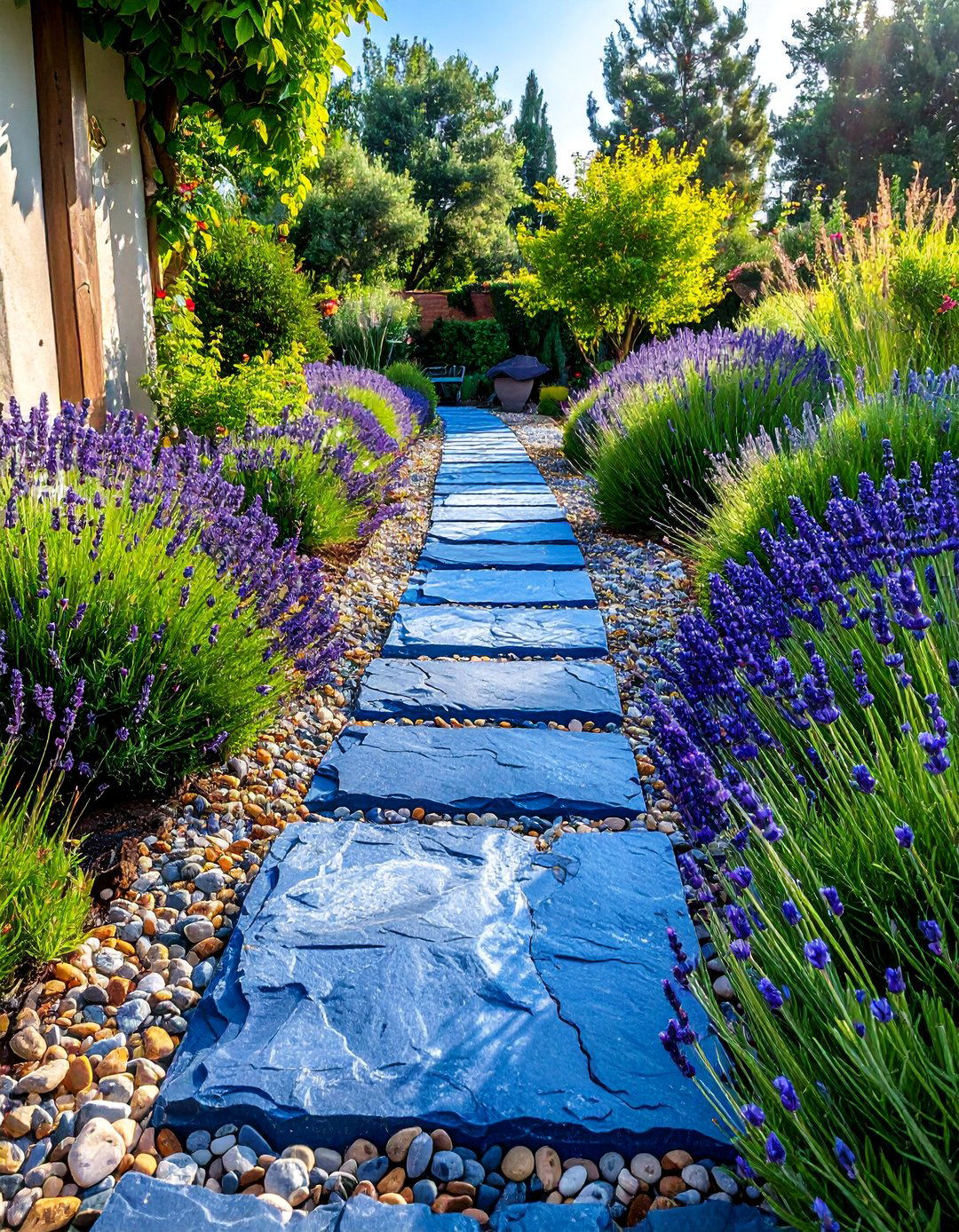
Consider a bluestone and pea gravel walkway for a charming, low-maintenance path with delightful texture and sound. This style typically involves setting larger bluestone pavers or stepping stones within a bed of pea gravel. The combination of the smooth, stable surface of the bluestone and the crunchy, shifting nature of the gravel creates a multi-sensory experience. The warm, earthy tones of the pea gravel beautifully complement the cool hues of the bluestone, adding visual interest. This design is perfect for cottage, coastal, or rustic garden styles and offers excellent drainage, making it a practical and aesthetically pleasing choice for various outdoor settings.
6. Bluestone Walkway with Brick Edging
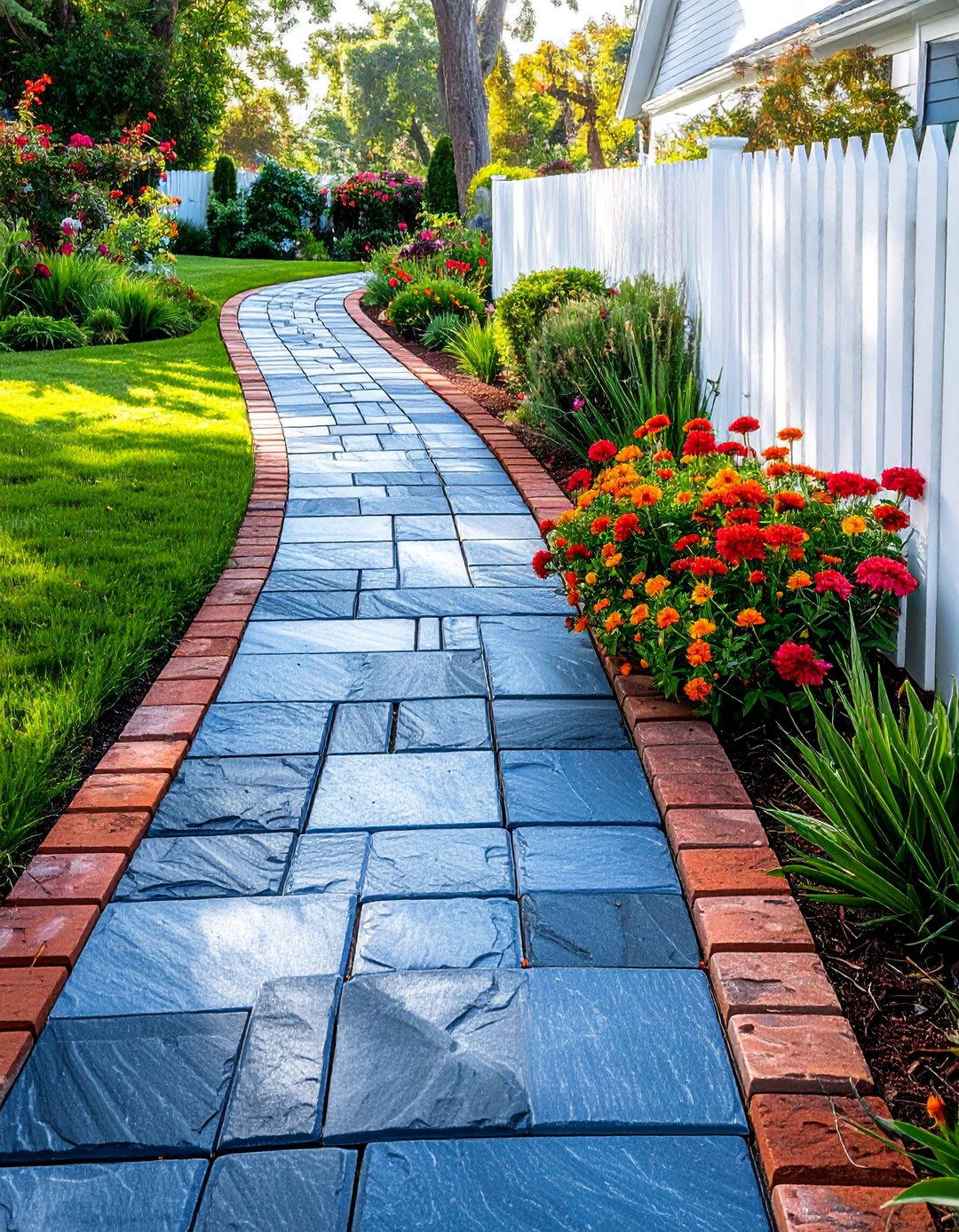
Pairing a bluestone walkway with brick edging creates a timeless and sophisticated look that adds definition and character to your garden path. The warm, reddish tones of classic brick provide a striking contrast against the cool blue-gray hues of the bluestone, framing the walkway and giving it a crisp, finished appearance. This combination is a hallmark of traditional and colonial landscape design. The brick border not only enhances the visual appeal but also helps to contain the walkway materials and prevent grass or mulch from encroaching onto the path. This durable and classic pairing ensures your walkway remains a standout feature for years to come.
7. Modern Bluestone Entry Walkway
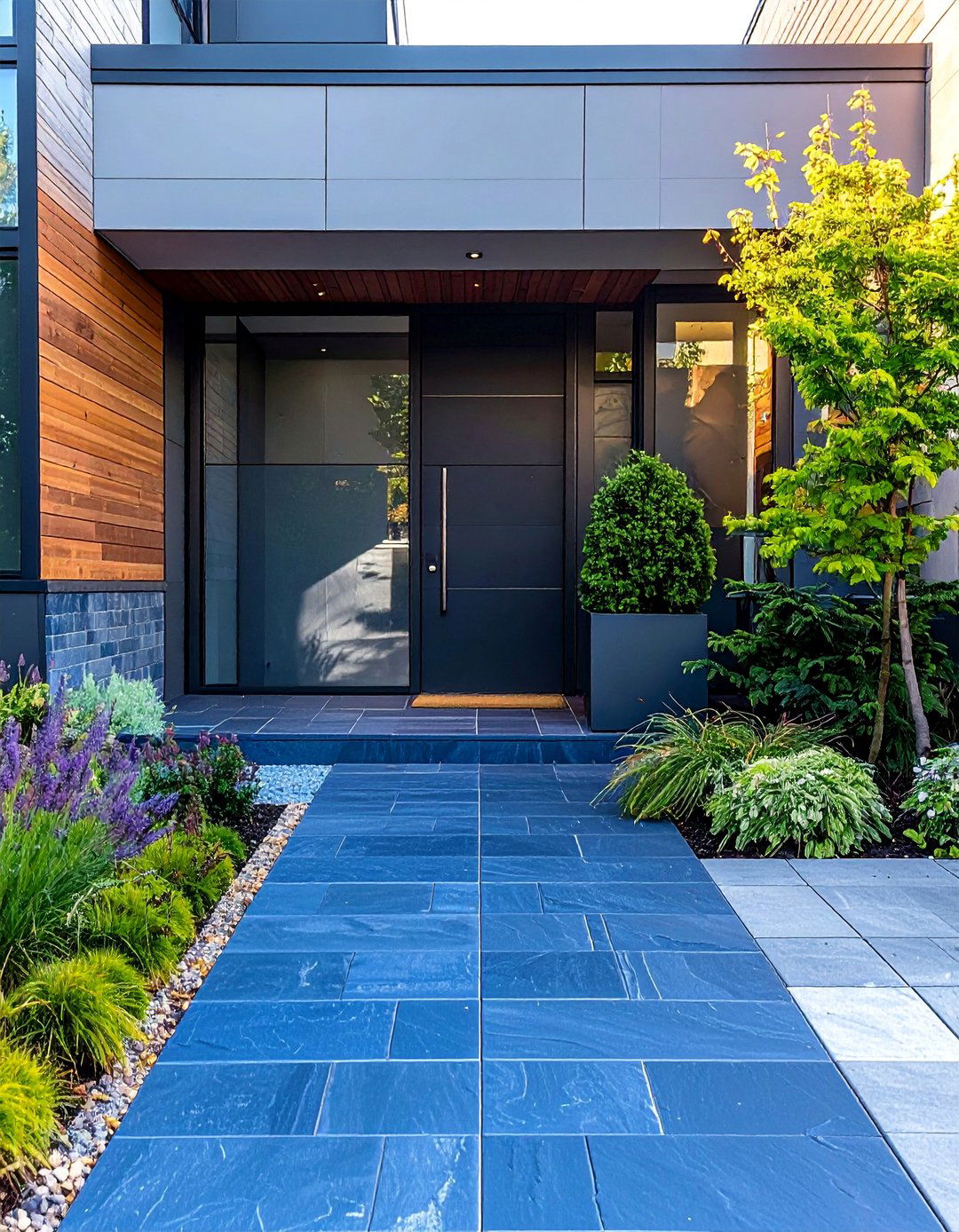
For a sleek and contemporary entrance, a modern bluestone entry walkway makes a powerful statement. This design favors large-format, precisely cut bluestone pavers with a smooth, thermal finish. The pavers are laid in a simple, geometric pattern with very narrow, uniform joints to create a seamless and monolithic appearance. The emphasis is on clean lines, minimalism, and the inherent beauty of the stone itself. This style perfectly complements modern, minimalist, or industrial architecture, providing a sophisticated and uncluttered path to your front door. The understated elegance of this walkway sets a tone of modern luxury before anyone even steps inside.
8. Cottage Garden Bluestone Walkway
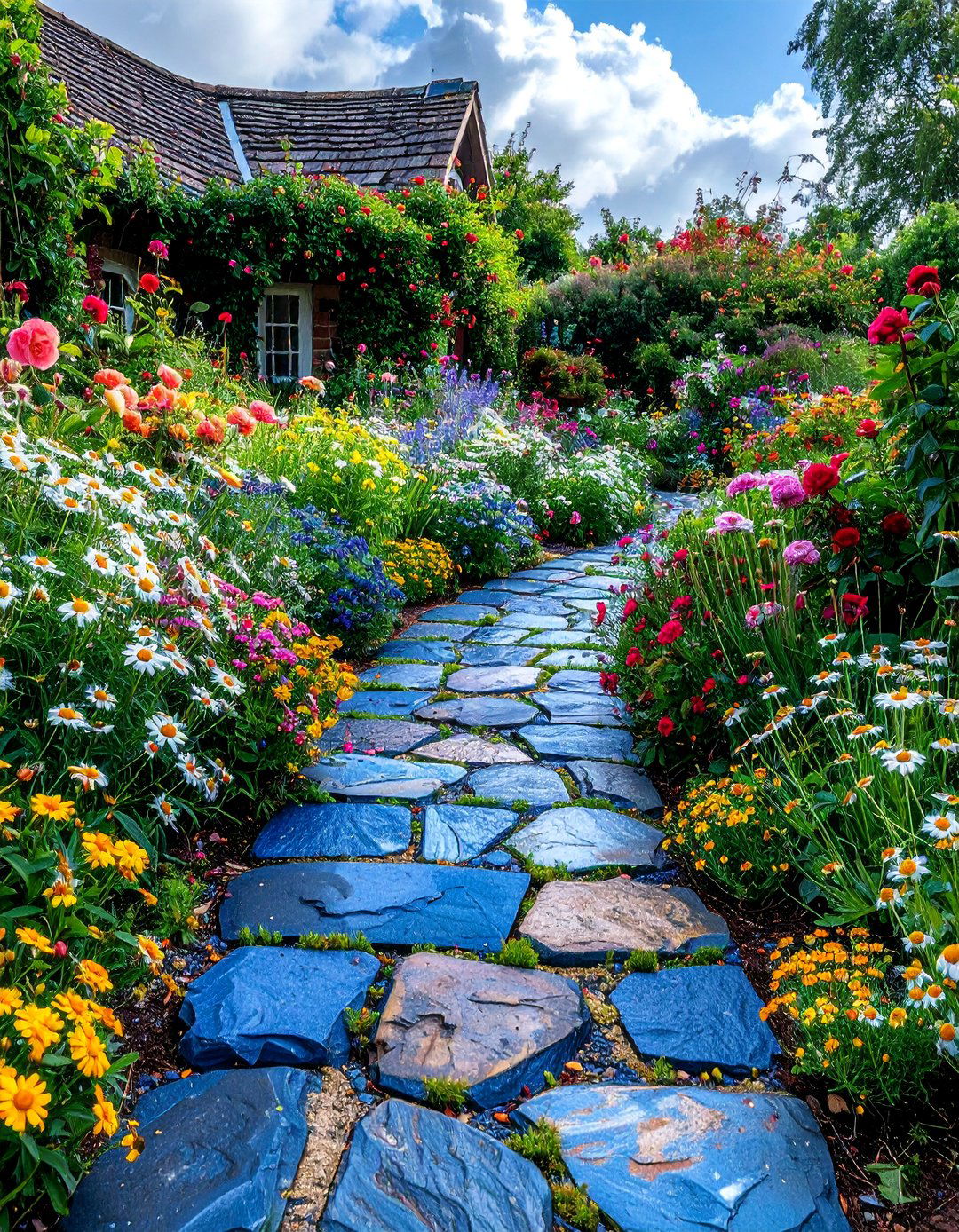
A cottage garden bluestone walkway evokes a sense of charm, romance, and informal beauty. This design embraces irregularity, often using a mix of different-sized and shaped bluestone pieces laid in a random pattern. The joints are typically wider and filled with a groundcover like moss or creeping thyme, or even allowed to have plants spilling over the edges. The path should feel relaxed and inviting, as if it has settled into the garden over time. Surrounded by an abundance of colorful, overflowing flowers and lush foliage, this type of walkway becomes an integral part of the whimsical and enchanting cottage garden aesthetic.
9. Bluestone Walkway with Thyme Groundcover
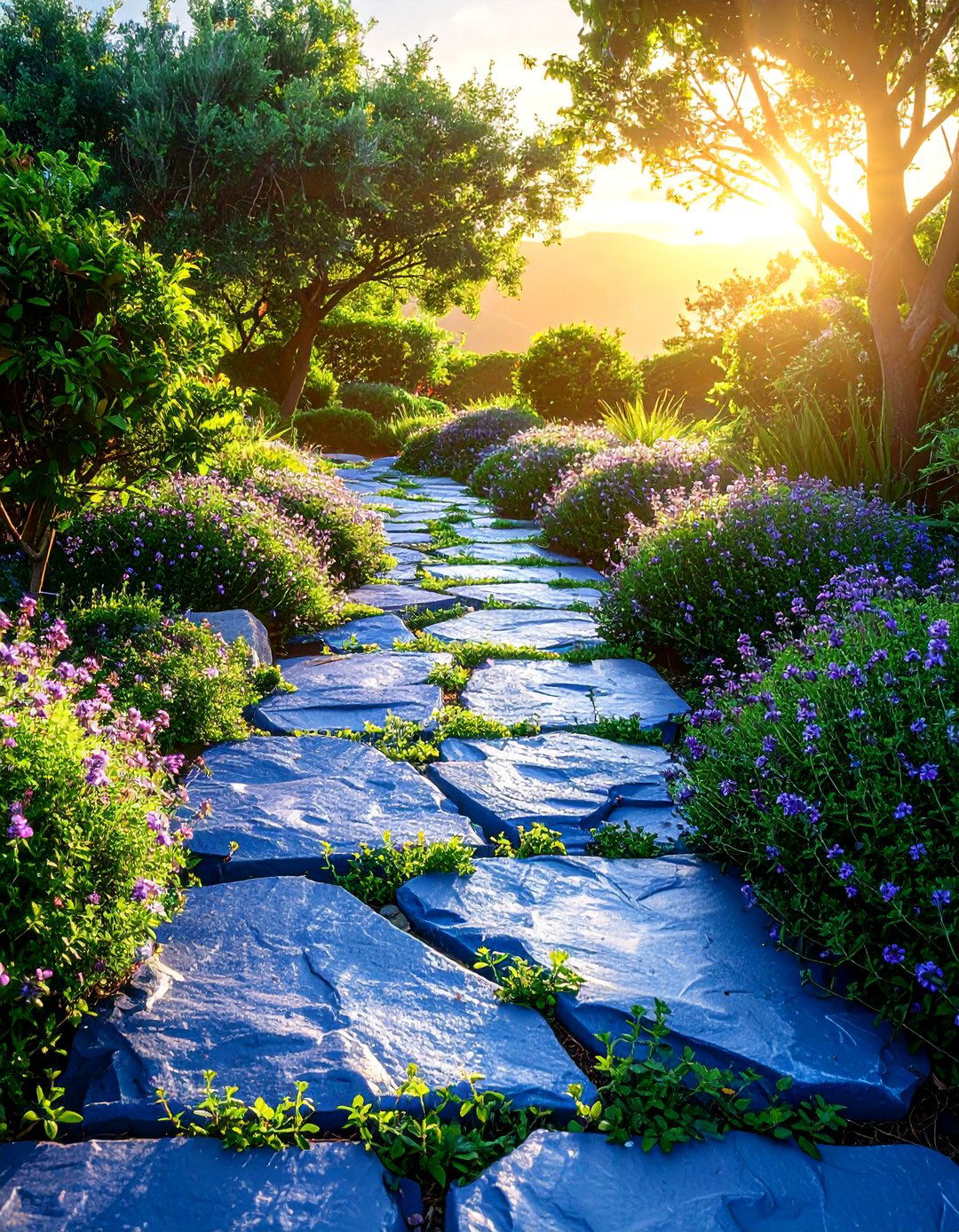
An enchanting and aromatic option is a bluestone walkway with thyme groundcover growing in the joints. By planting a hardy, low-growing variety like creeping thyme between the stones, you create a path that delights the senses. As you walk along the path, the thyme releases a pleasant, earthy fragrance, adding an extra layer of experience to your garden stroll. The soft, green foliage and tiny flowers of the thyme beautifully soften the hard edges of the bluestone pavers. This living walkway is not only beautiful but also resilient and relatively low-maintenance, making it a perfect choice for creating a functional and fragrant garden feature.
10. Wide Bluestone Garden Promenade
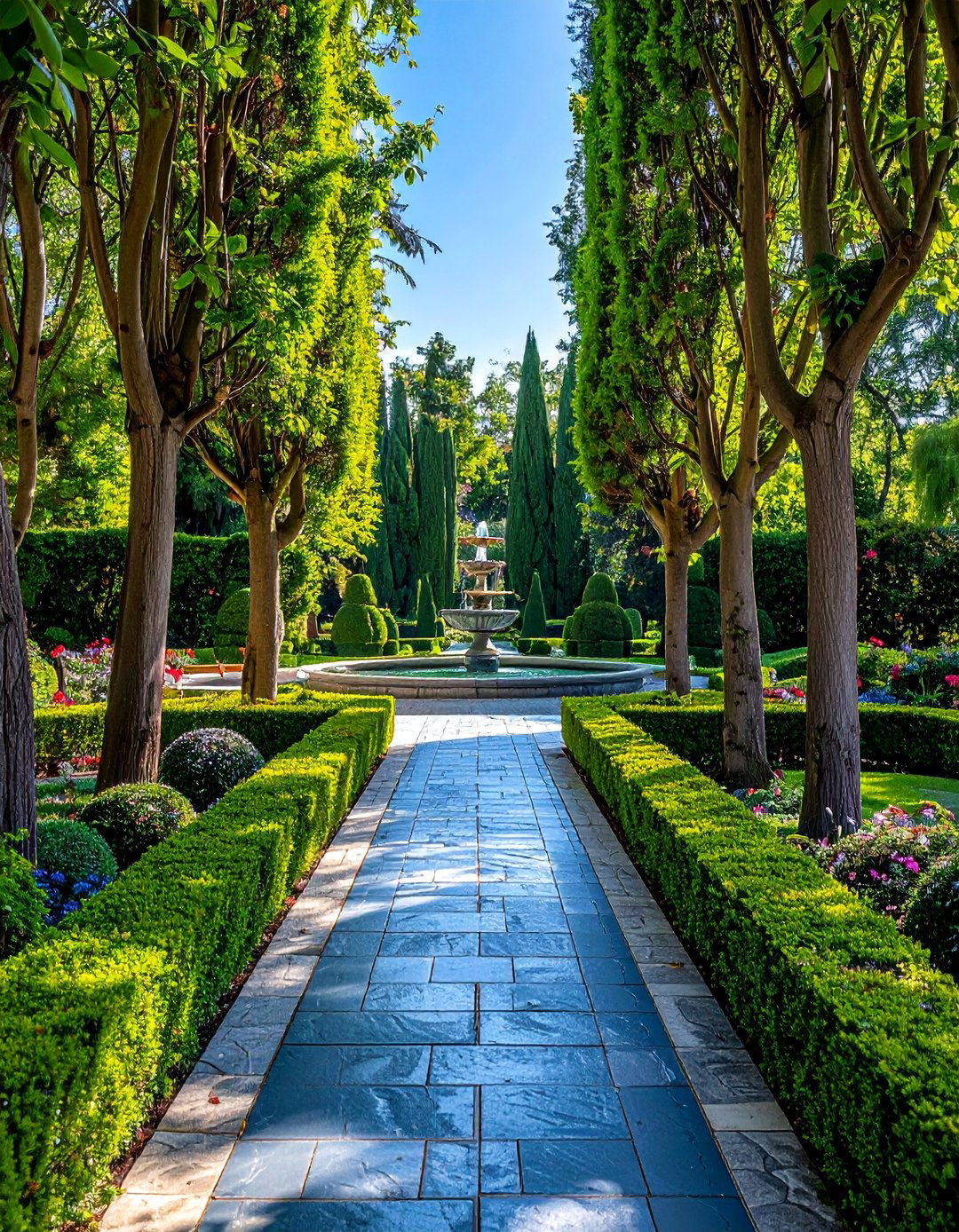
Create a sense of grandeur and purpose with a wide bluestone garden promenade. This design moves beyond a simple path to become a significant architectural element in your landscape. A generous width, often four feet or more, allows for comfortable side-by-side strolling and can serve as an extension of your outdoor living space. This expansive walkway can act as the main axis of a formal garden, connecting different areas or leading to a prominent focal point like a gazebo or statue. Using large, uniform bluestone pavers enhances the scale and sophistication, making the promenade a destination in itself rather than just a way to get from one point to another.
11. Bluestone Path to a Water Feature
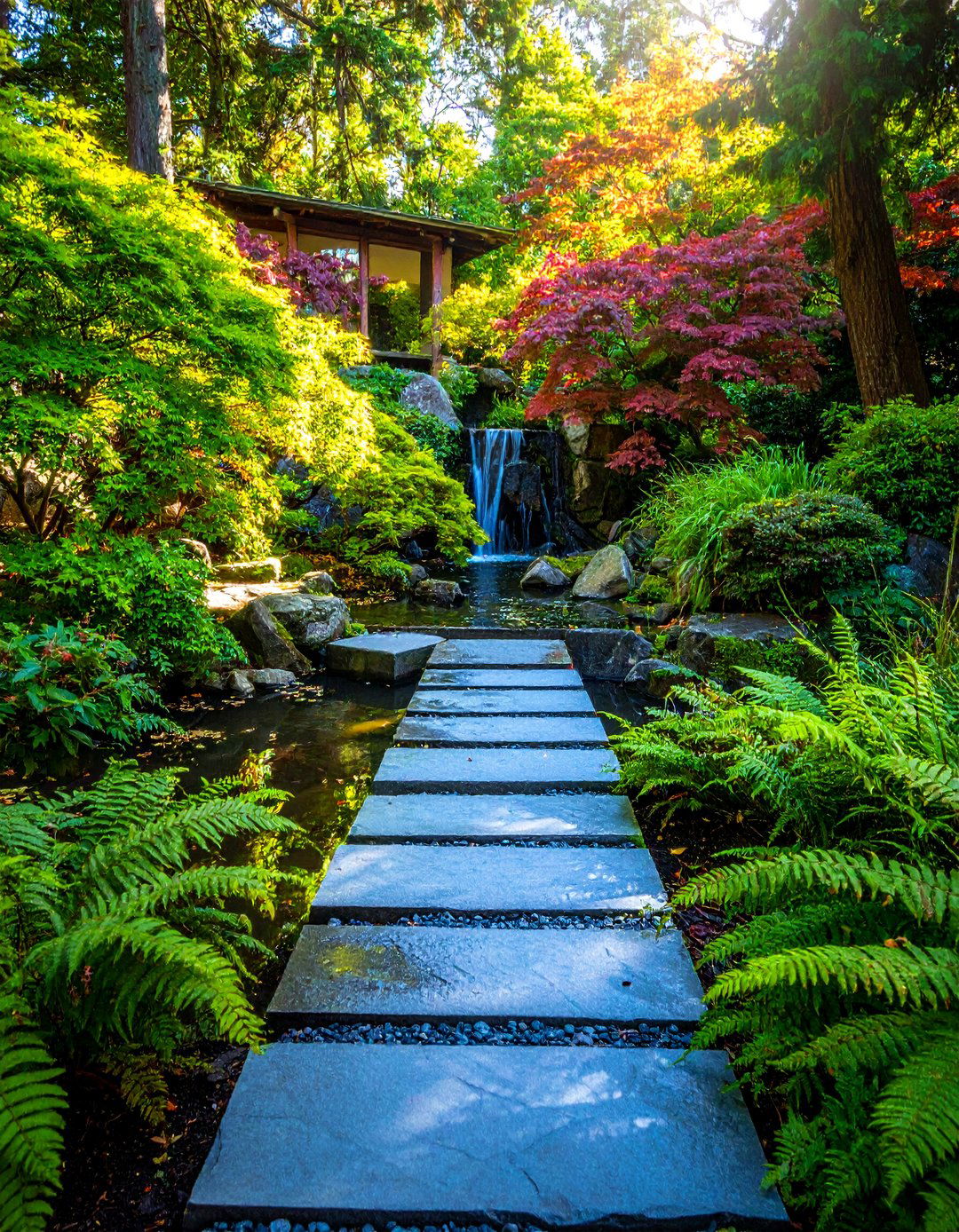
Use a bluestone path to a water feature to build anticipation and create a meaningful journey in your garden. The walkway acts as a visual guide, drawing the eye and leading visitors toward the tranquil sight and sound of a fountain, pond, or stream. The natural, earthy texture of the bluestone provides a perfect complement to the fluid, reflective quality of water. You can design the path to be straight and direct for a formal feel or gently curved for a more naturalistic approach. As you walk, the sound of the water grows stronger, making the arrival at the feature a rewarding and serene experience that elevates the entire garden design.
12. Mixed-Pattern Bluestone Walkway
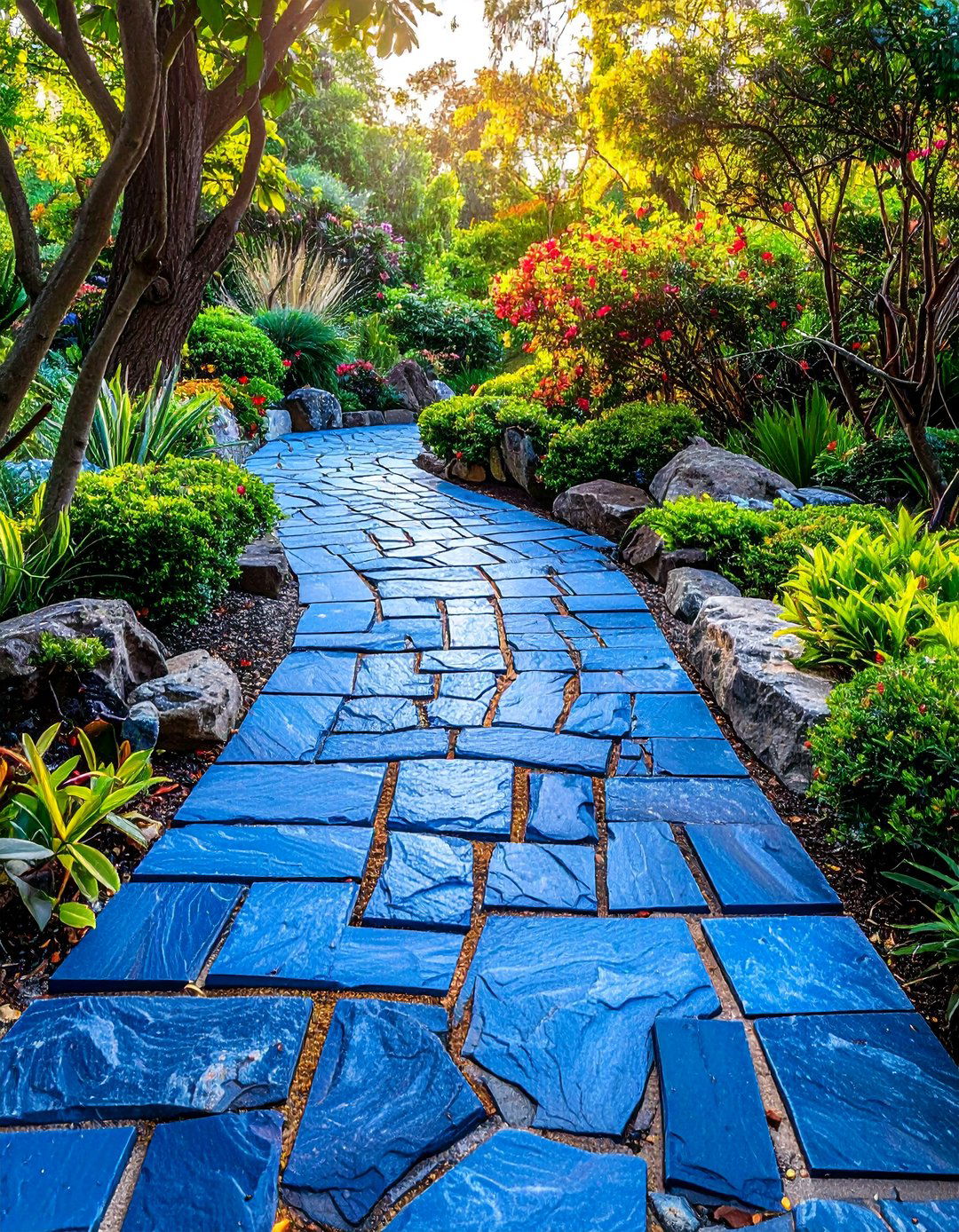
A mixed-pattern bluestone walkway offers a dynamic and visually engaging design for those who appreciate intricate detail. This approach involves combining different shapes and sizes of bluestone within a single path. For example, you could create a border of rectangular pavers with an interior of irregular flagstones, or alternate sections of running bond with a random pattern. This technique can be used to add artistic flair, define transitions between different garden areas, or simply break up the monotony of a long path. The result is a unique, custom-looking walkway that highlights the versatility of bluestone and adds a layer of sophisticated craftsmanship to your landscape.
13. Bluestone Walkway with Landscape Lighting
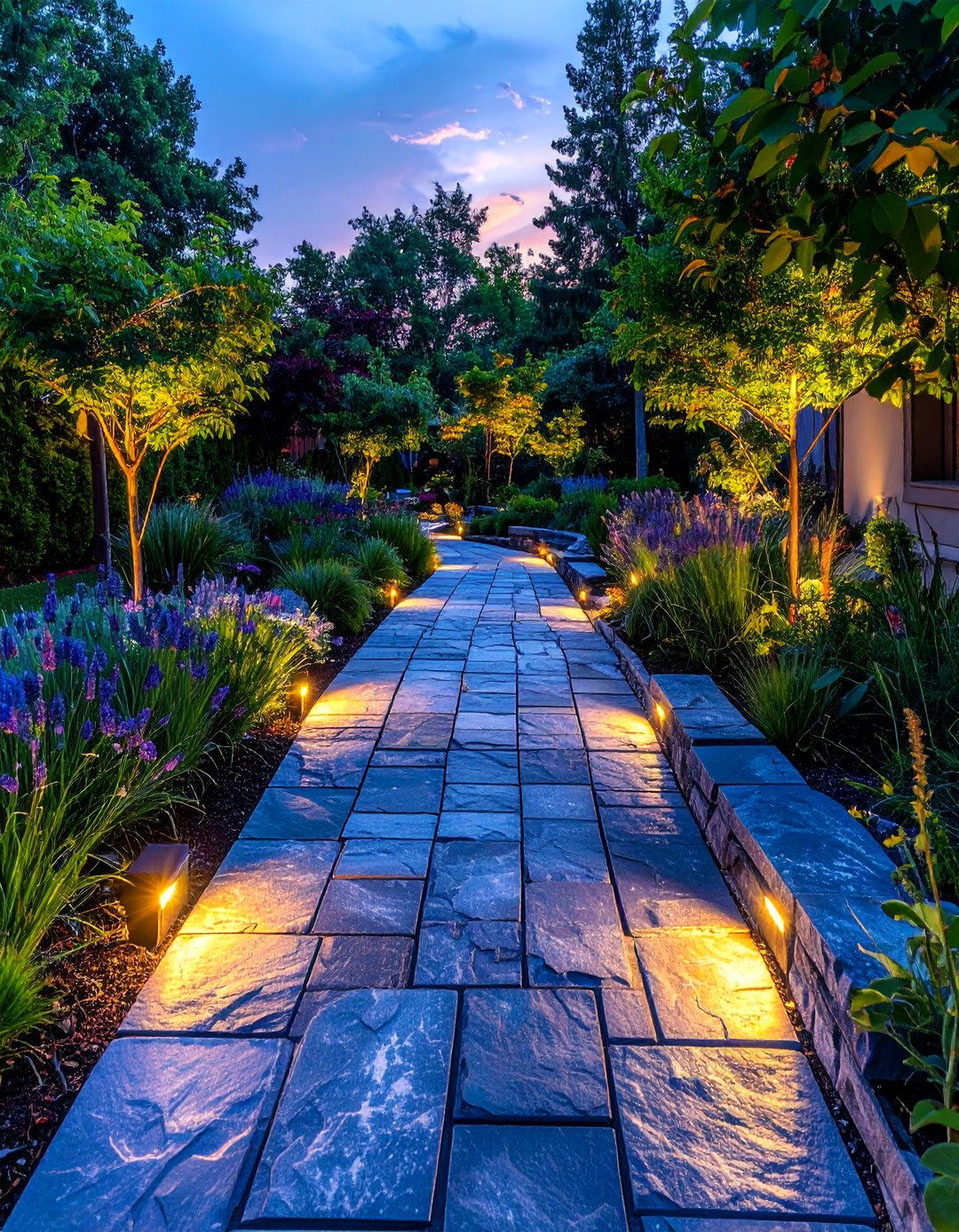
Integrating landscape lighting into your bluestone walkway ensures it remains a safe and beautiful feature after sunset. Low-voltage path lights installed along the edges can cast a warm, gentle glow across the stone, highlighting its unique texture and color variations. Another subtle option is to install small, recessed lights directly into the walkway or adjacent structures. This not only improves visibility and prevents tripping hazards but also creates a magical ambiance in the garden at night. Thoughtfully placed lighting transforms the walkway from a purely functional element into a stunning nighttime feature, extending the enjoyment of your outdoor space well into the evening hours.
14. Circular Bluestone Landing Walkway
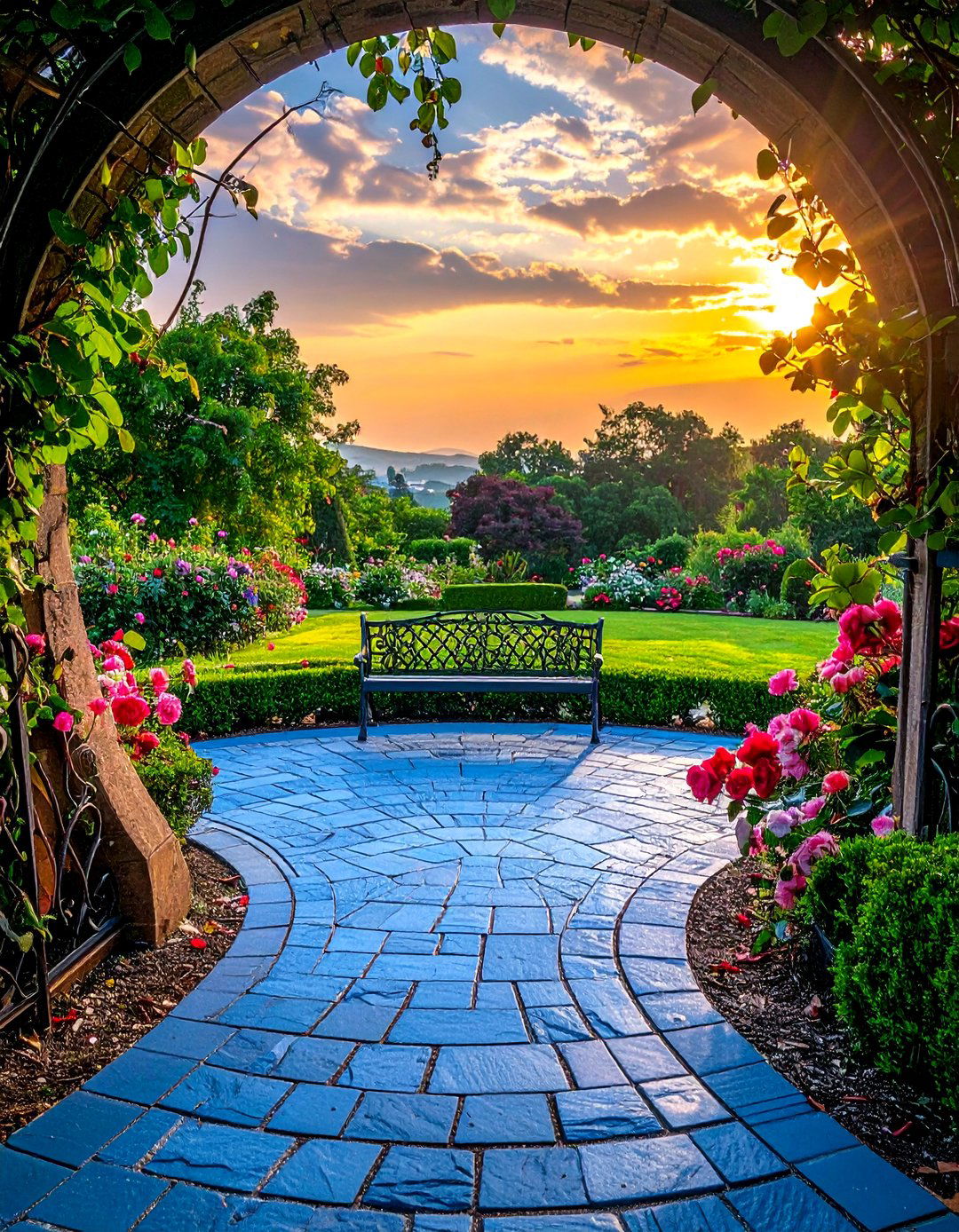
Design a walkway that culminates in a circular bluestone landing to create a deliberate and inviting destination within your garden. A straight or curved path can open up into a perfectly crafted circle, serving as a small patio or a focal point. This landing is an ideal spot for a bench, a collection of potted plants, a birdbath, or a sculpture. The circular shape provides a sense of enclosure and rest, encouraging visitors to pause and enjoy the surrounding view. The precise stonework required for the circle demonstrates craftsmanship and adds a touch of formal elegance, making it a powerful design element in any landscape plan.
15. Raised Bluestone Walkway
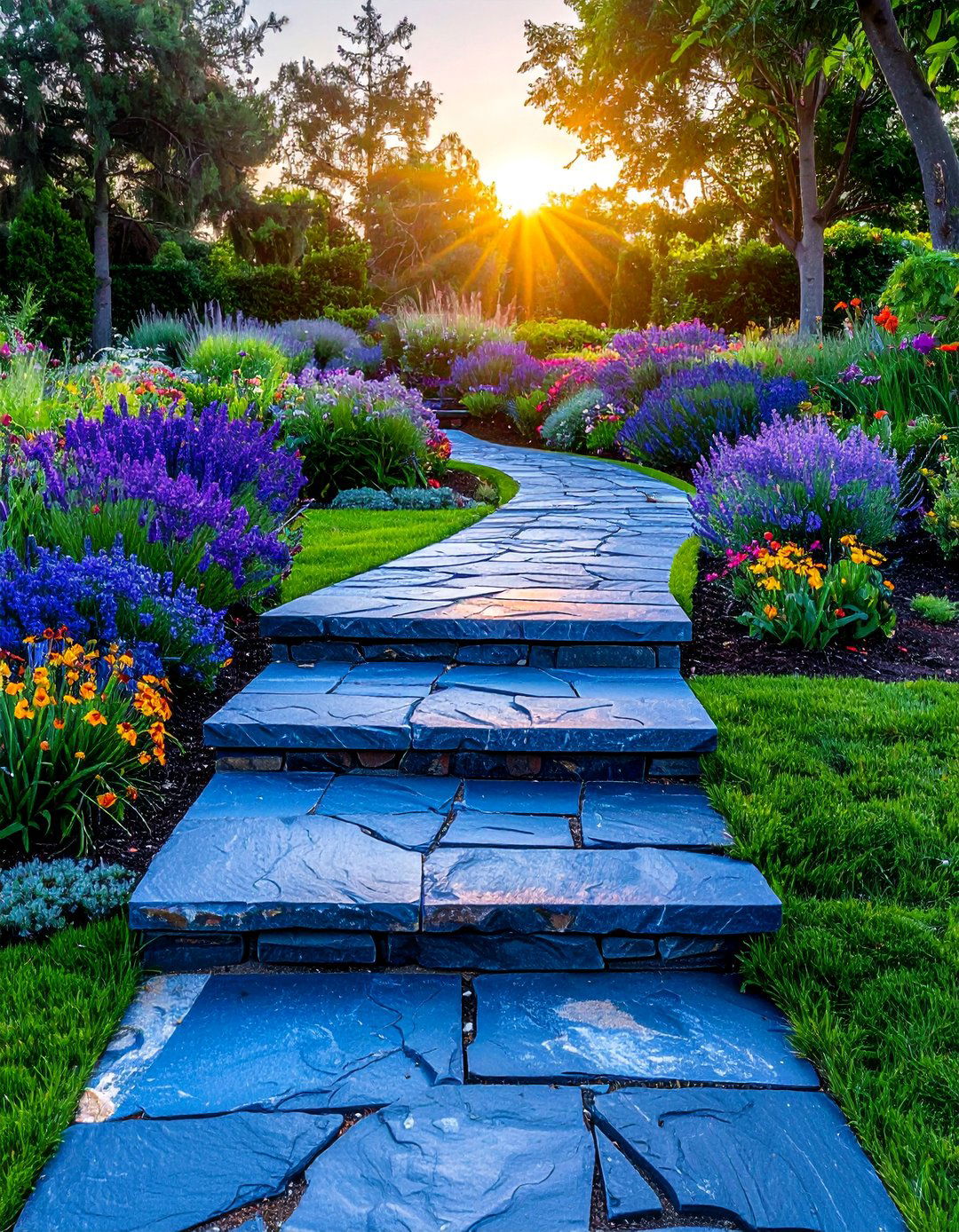
A raised bluestone walkway adds dimension and a formal structure to gardens with varying elevations. By constructing the path with one or more shallow steps, you can easily navigate a gentle slope or elevate the walkway above surrounding garden beds. This design creates a clear separation between the path and the planting areas, preventing mulch or soil from spilling onto the walkway and giving the garden a clean, organized appearance. The raised edge, often crafted from the same bluestone, provides a strong visual line that can define the garden's layout. This approach lends a sense of importance and architectural interest to the path.
Conclusion:
Bluestone is a remarkably versatile material that can be adapted to any garden vision, from rustic and natural to sleek and modern. By exploring different layouts, joint materials, and design features like curves, edging, and lighting, you can create a bluestone walkway that is uniquely yours. Each idea offers a different way to blend functionality with aesthetic appeal, ensuring your garden path is not just a route, but a beautiful journey. A well-designed bluestone walkway will elevate your landscape, providing enduring beauty and a solid foundation for years of garden enjoyment.

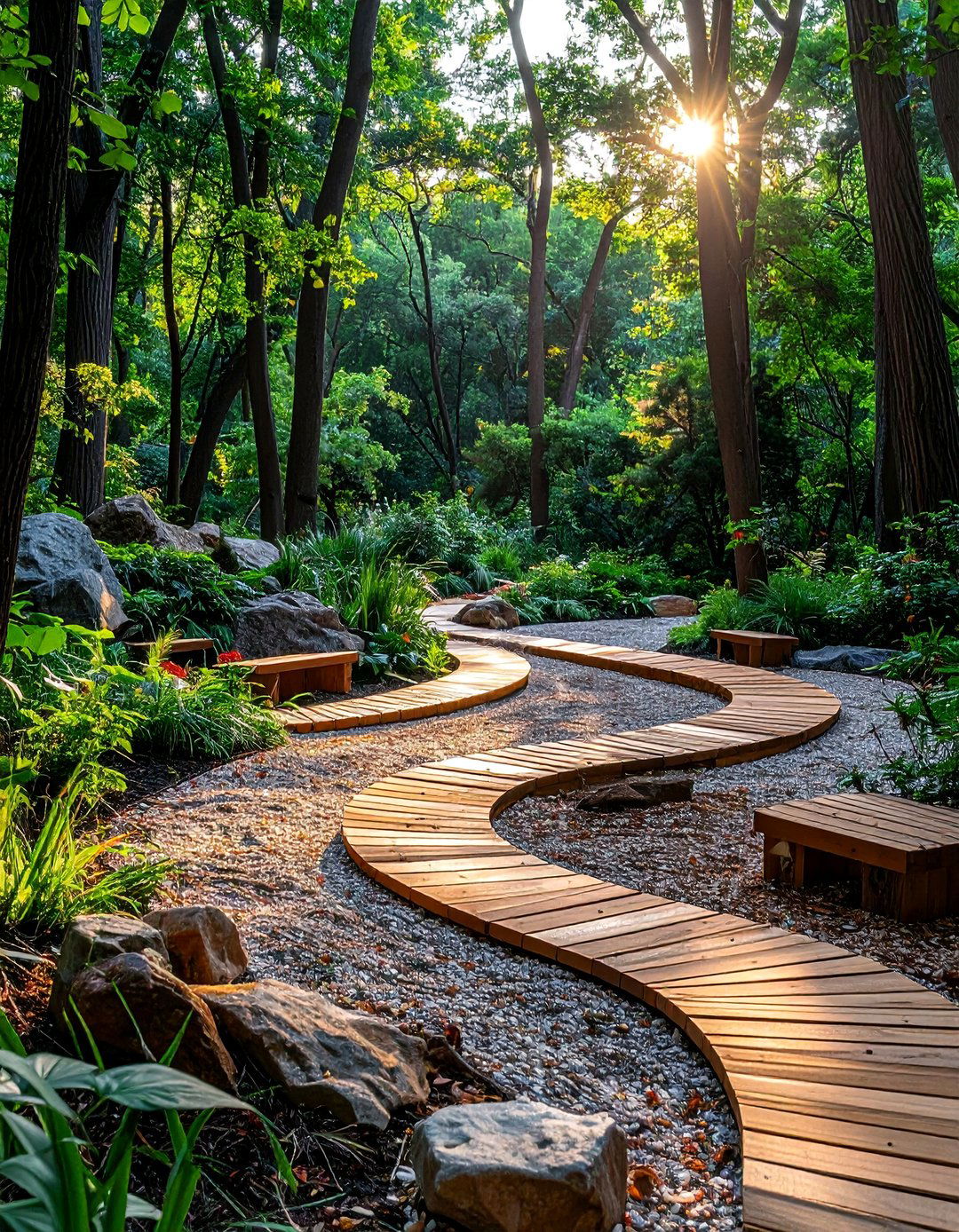
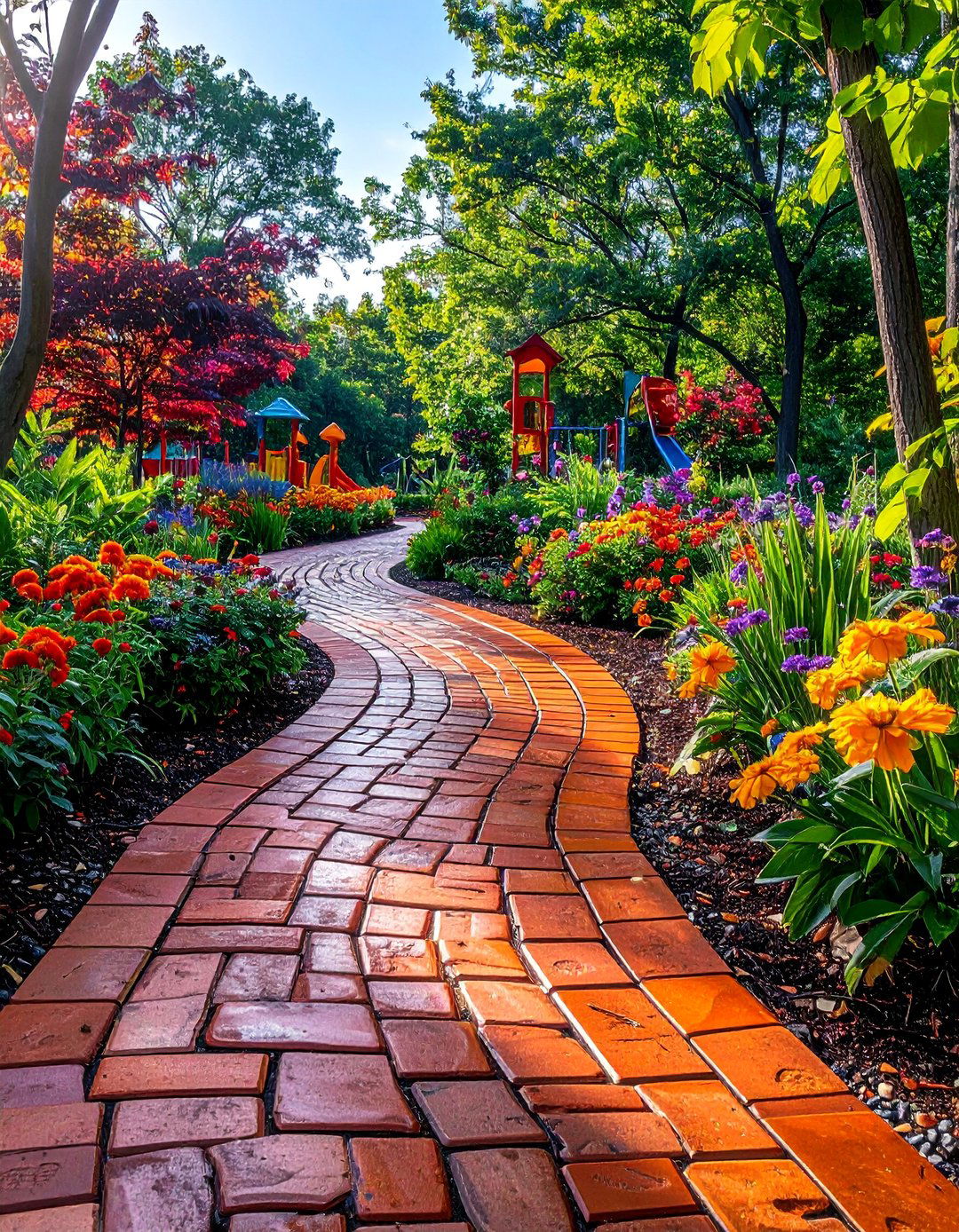
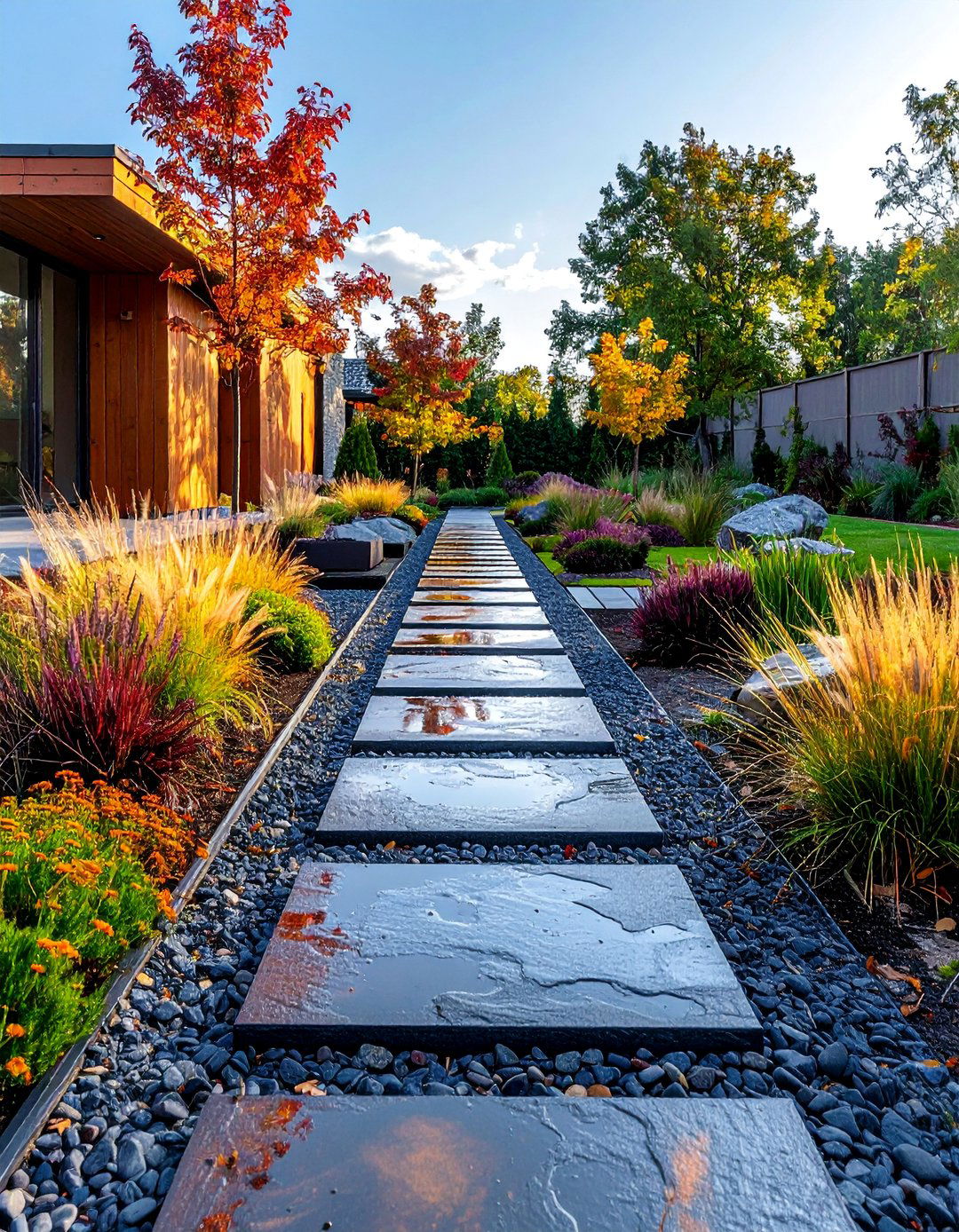
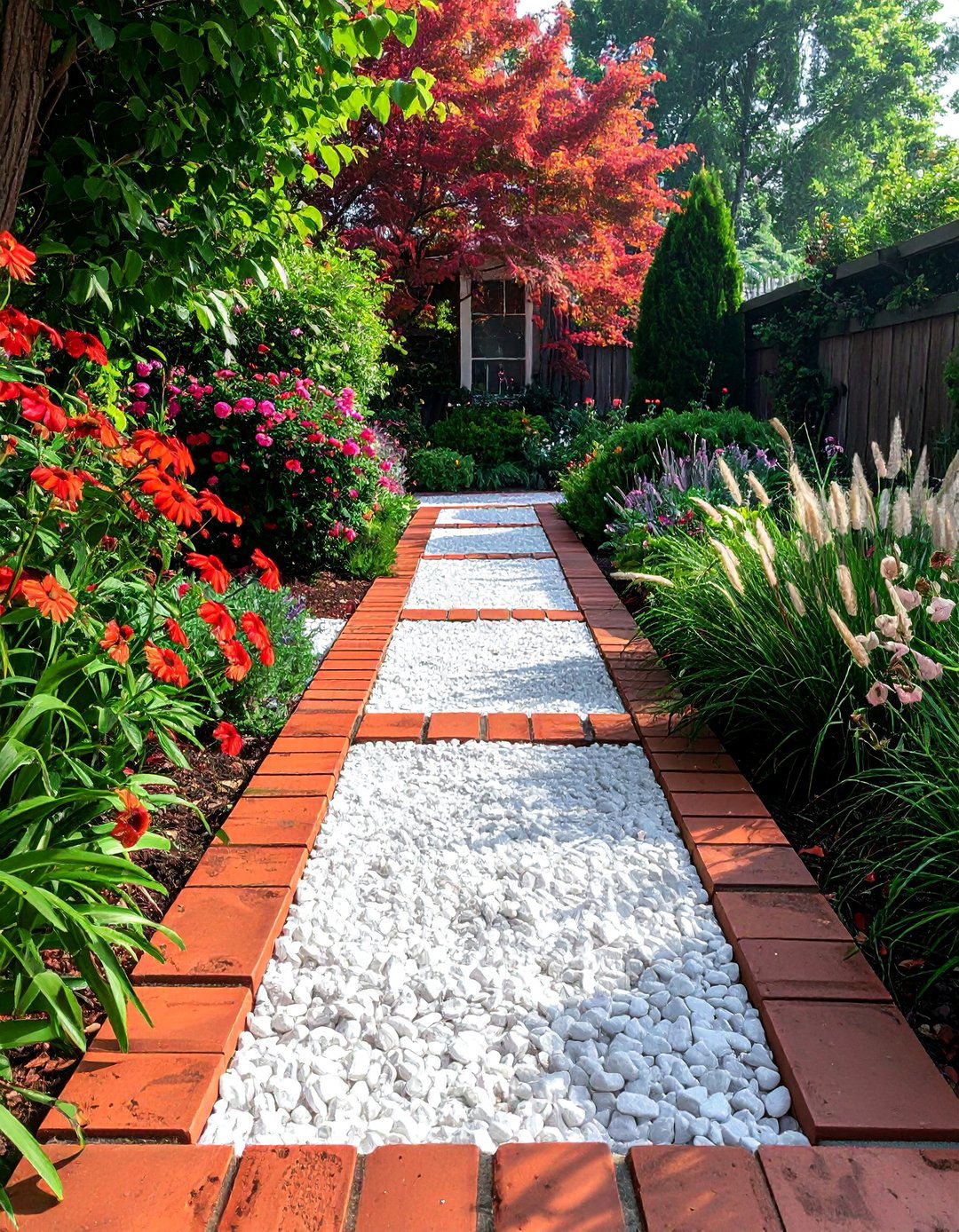
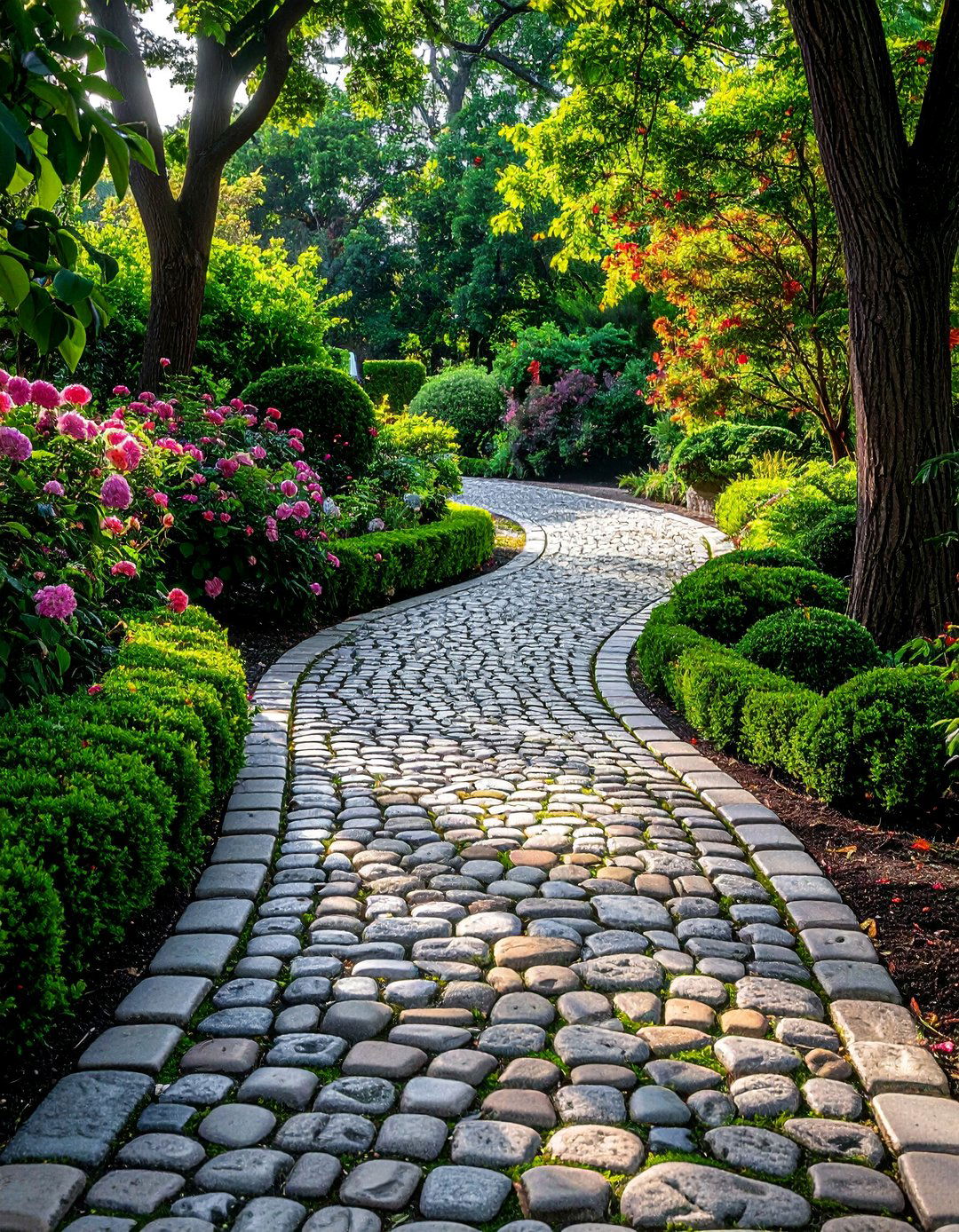
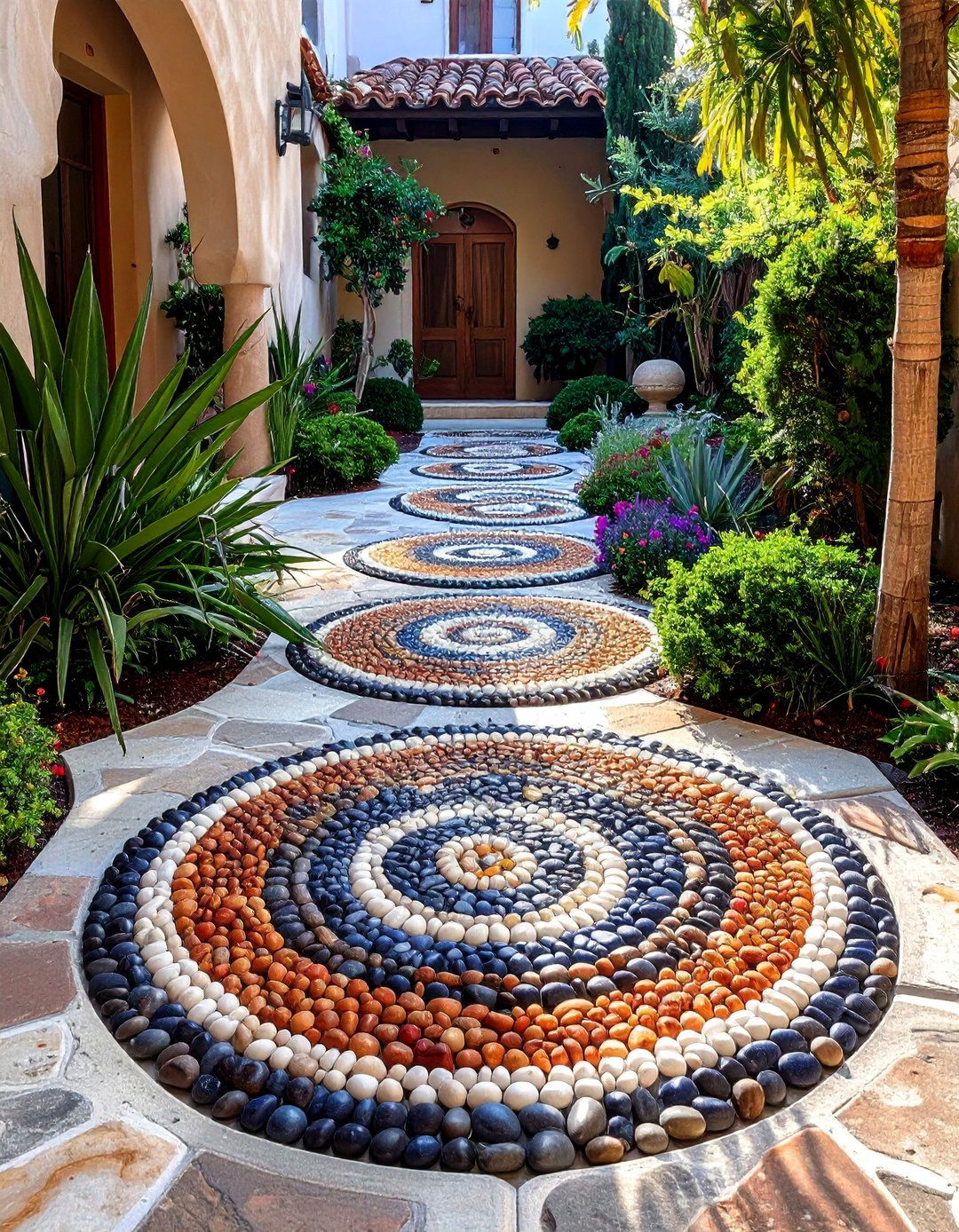
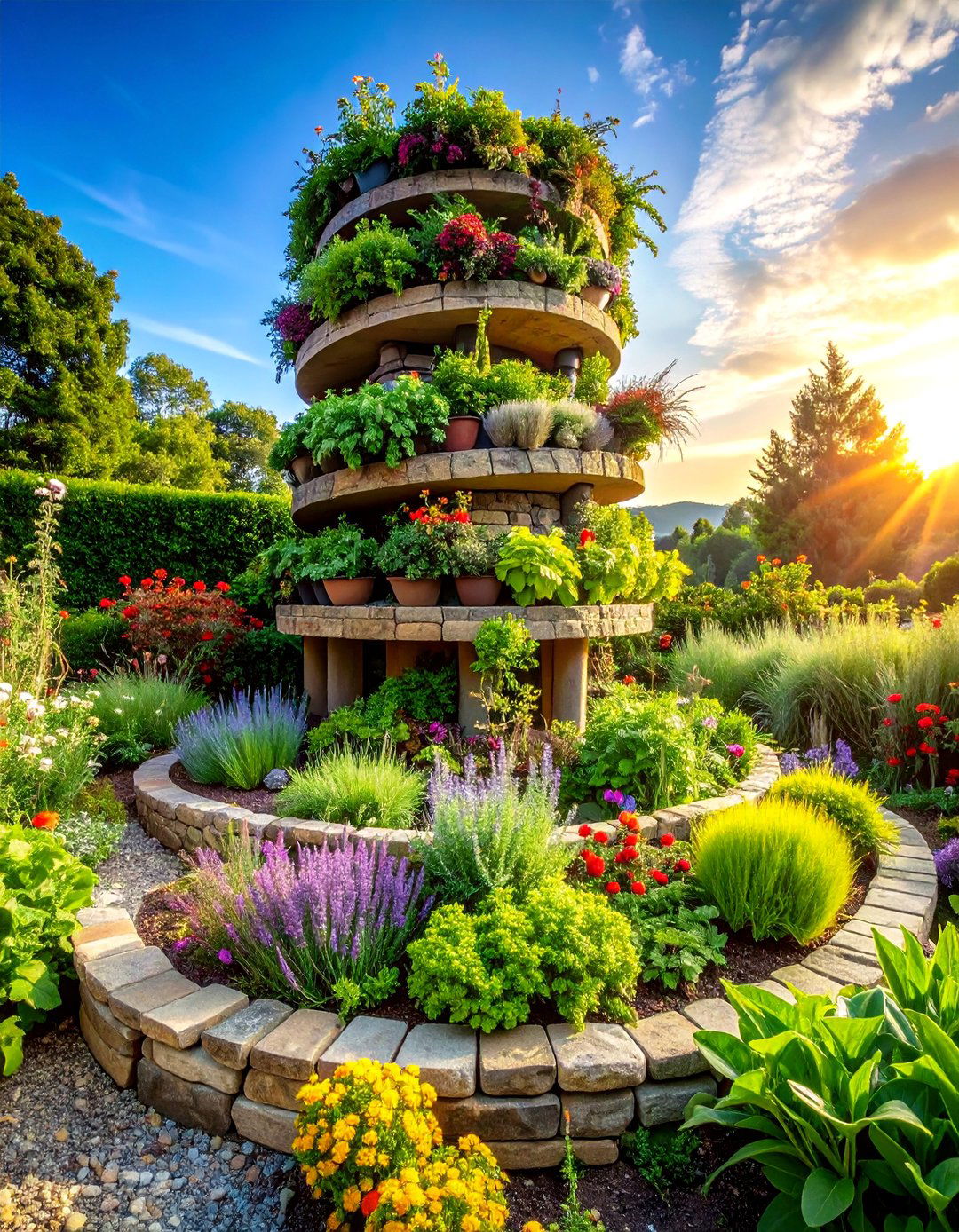
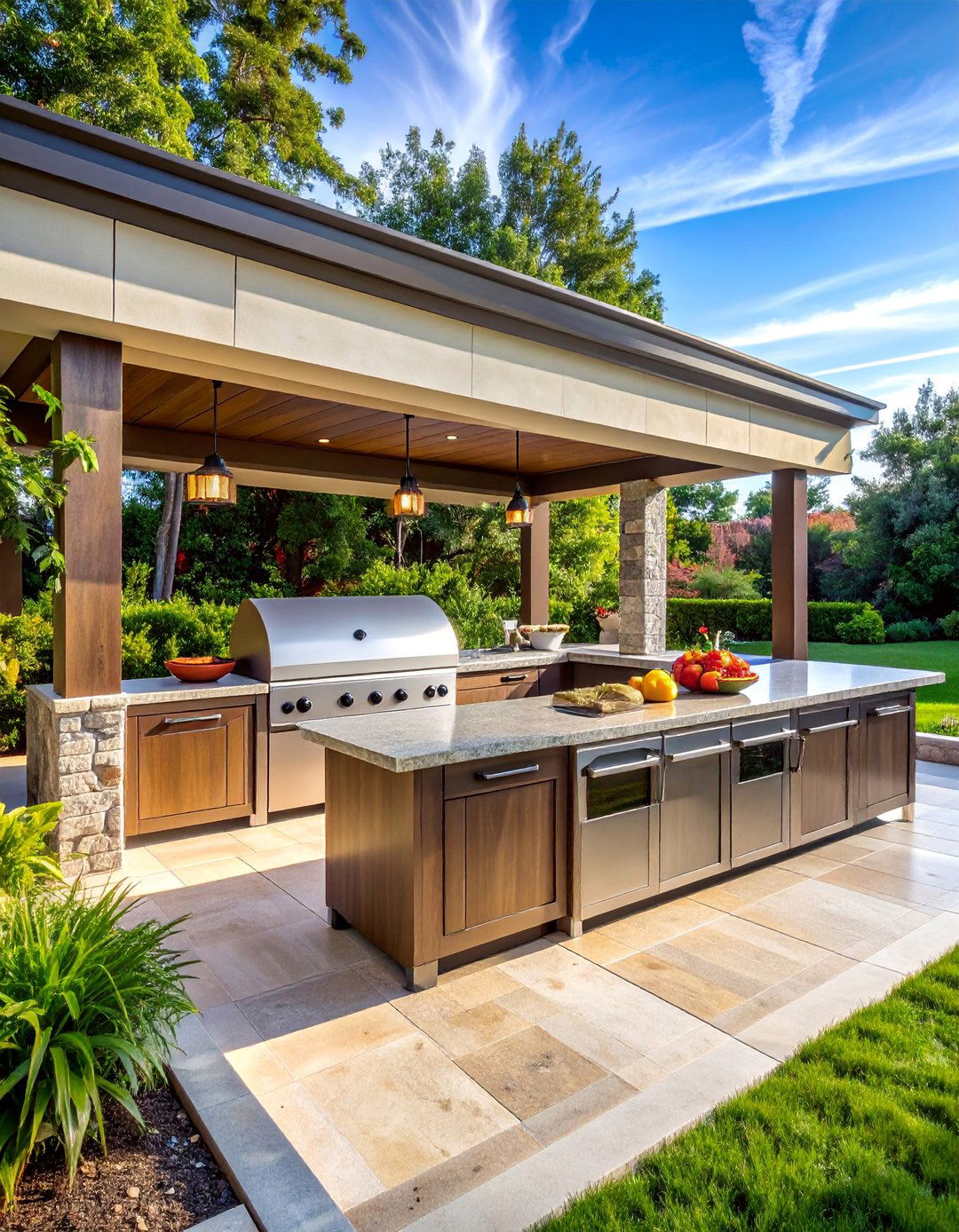
Leave a Reply